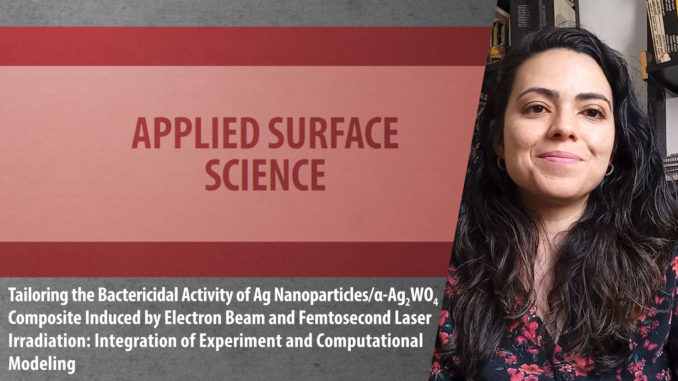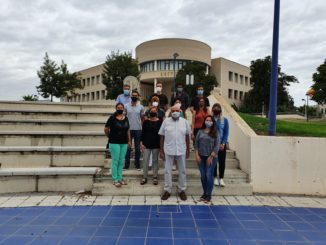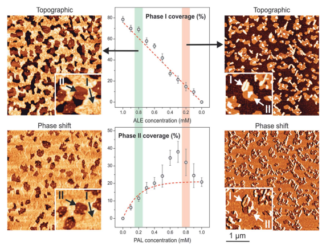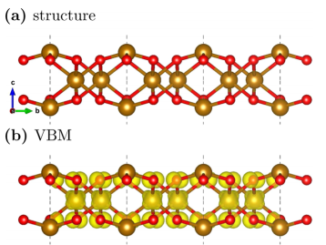
Tailoring the Bactericidal Activity of Ag Nanoparticles/α-Ag2WO4 Composite Induced by Electron Beam and Femtosecond Laser Irradiation: Integration of Experiment and Computational Modeling
Abstract: In nanotechnology research, significant effort is devoted to fabricating patterns of metallic nanoparticles on the surfaces of different semiconductors to find innovative materials with favorable characteristics, such as antimicrobial and photocatalytic properties, for novel applications. We present experimental and computational progress, involving a combined approach, on the antimicrobial activity against methicillin-resistant Staphylococcus aureus (MRSA) of as-synthesized α-Ag2WO4 samples and Ag nanoparticle composites (Ag NPs)/α-Ag2WO4. The former included two morphologies: hexagonal rod-like (α-Ag2WO4-R) and cuboid-like (α-Ag2WO4-C), and the latter included composites formed under electron beam, Ag NPs/α-Ag2WO4-RE and Ag NPs/α-Ag2WO4-CE, and femtosecond (fs) laser irradiation, Ag NPs/α-Ag2WO4-RL and Ag NPs/α-Ag2WO4-CL. Direct observations of the arrangement of Ag NPs on the Ag NPs/α-Ag2WO4 composites irradiated with an electron beam and laser, through transmission electron microscopy (TEM), high-resolution TEM, energy-dispersive X-ray spectroscopy, and field-emission scanning electron microscopy, allow us to investigate the surface morphology, chemical composition, homogeneity, and crystallinity. Therefore, these experimental factors, and in particular, the facet-dependent response of Ag NPs/α-Ag2WO4 composites were discussed and analyzed from the perspective provided by the results obtained by first-principles calculations. On this basis, α-Ag2WO4-R material proved to be a better bactericidal agent than α-Ag2WO4-C with minimum bactericidal concentration (MBC) values of 128 and 256 μg/mL, respectively. However, the Ag NPs/α-Ag2WO4-CL composite is the most efficient bactericidal agent of all tested samples (MBC = 4 μg/mL). This superior performance can be attributed to the cooperative effects of crystal facets and defect engineering. These results on the synthesis and stability of the Ag NPs/α-Ag2WO4 composites can be used for the development of highly efficient bactericidal agents for use in environmental remediation and the potential extension of methods to produce materials with catalytic applications.
Author(s): Macedo, NG; Machado, TR; Roca, RA; Assis, M; Foggi, CC; Puerto-Belda, V; Mínguez-Vega, G; Rodrigues, A; San-Miguel, MA; Cordoncillo, E; Beltrán-Mir, H; Andrés, J; Longo, E
ACS Appl. Bio Mater.
Published: January 15, 2019




